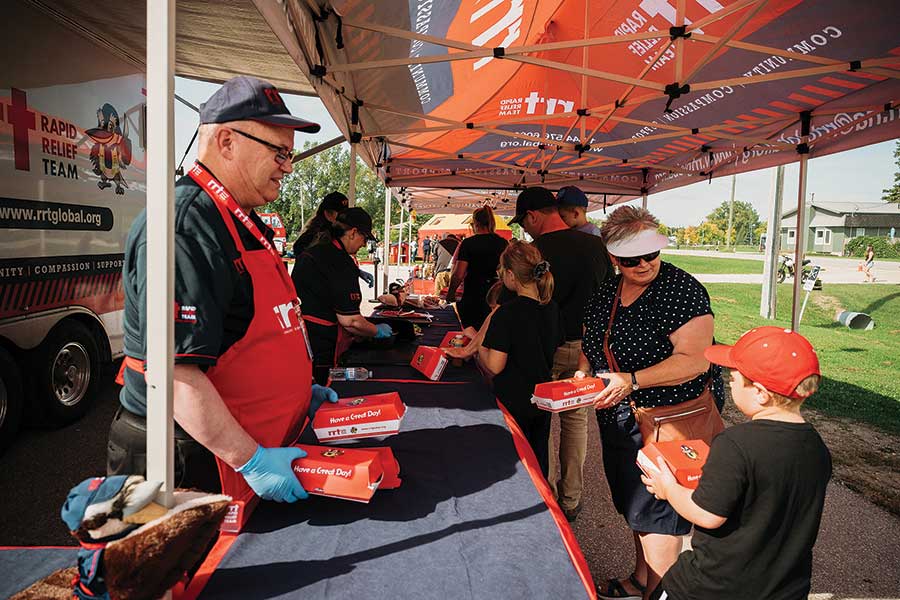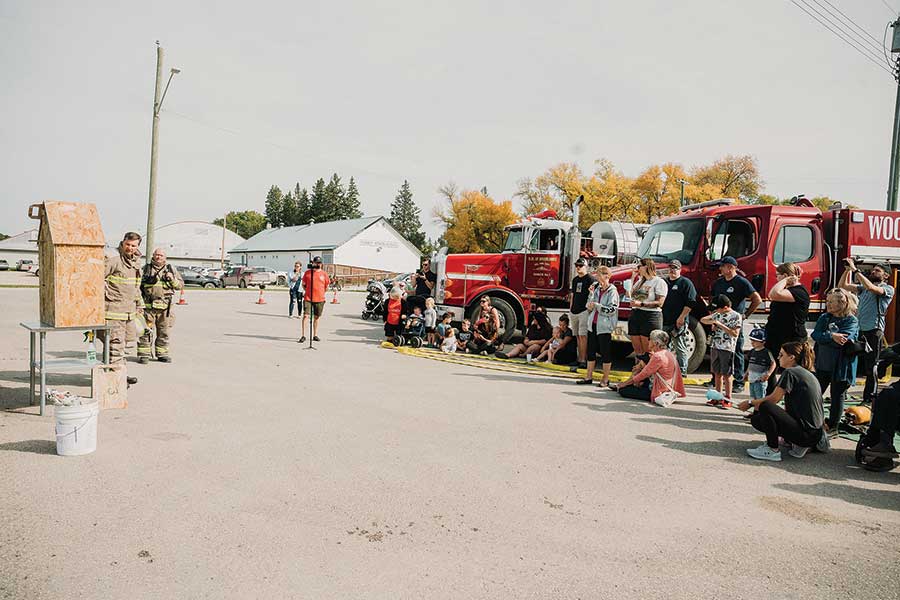October is Fire Prevention Month, and Kristy Hill of the Woodlands Fire Department is encouraging residents to use the opportunity to learn, plan and prepare for emergencies.
“Fire Prevention Week is dedicated to teaching the public about fire hazards, risks and how to keep themselves safe,” Hill explained. “It helps educate residents about fire safety and how to reduce fire incidents, highlights the importance of the fire service, promotes safety tools such as smoke and CO detectors, and encourages residents to review their home fire escape plan.”
This year’s theme is lithium-ion battery safety, focusing on proper use and charging in the home. These batteries are increasingly common in everyday devices, but they can pose risks if not handled carefully. Information on the theme and history of Fire Prevention Week can be found through the National Fire Protection Association.
Local fire departments take part in a variety of activities during the week. Woodlands hosted its annual open house on Sept. 13, while Rosser traditionally holds its event during Fire Prevention Week. In addition, firefighters will visit schools across the RM to deliver public education sessions.
Hill also stressed the importance of Fire Smart principles for both residential and commercial properties.
“Fire Smarting your property can drastically reduce your fire risk,” she said. “In the RM of Woodlands our response time varies greatly depending on where you live. Fire Smarting can mean the difference between a small fire and one that spreads and causes significant damage before firefighters arrive. We want residents to be safe, and we don’t want them or their properties to be in danger.”
Top 10 FireSmart Tips for Homeowners
• Create a fire-free zone – Keep the first 1.5 metres around your home clear of wood, leaves, mulch, and flammable plants. Use gravel or stone instead.
• Choose a safe roof – Install and maintain Class-A fire-rated roofing (metal, asphalt, clay, composite). Avoid untreated wood shakes.
• Clean gutters & roofs – Remove leaves, pine needles, and debris regularly so embers have nothing to ignite.
• Screen vents & eaves – Use non-combustible vents with fine mesh to keep sparks out of your attic and walls.
• Upgrade siding & decks – Stucco, brick, fibre cement, or metal siding resist fire better than vinyl or untreated wood. Enclose deck undersides.
• Prune trees – Trim branches within 2 metres of the ground and keep conifers at least 10 metres from your home.
• Space trees – Maintain at least 3 metres between tree crowns to prevent fire from jumping tree to tree.
• Store firewood safely – Keep firewood and propane tanks at least 10 metres away from your home.
• Landscape smartly – Plant fire-resistant shrubs and keep grass mowed under 10 cm. Avoid highly flammable plants like cedar, juniper, pine, and spruce.
• Maintain year-round – Include fire safety in your spring and fall yard cleanups. Remove dry branches, twigs, and debris from around your home.
These simple steps can make the difference between a small fire and a devastating loss. For more information and a self-assessment guide, visit firesmartcanada.ca
Civic address signs
Another simple but essential tool for safety is the civic address sign. These reflective markers, placed at the end of rural driveways, allow emergency services to quickly locate a property.
“It’s important to know your civic address because that is the mechanism you would use to tell 911 your location in case of an emergency,” said Hill. “It’s how we know where to respond.”
While house numbers in towns may look more traditional, rural numbers are based on distance from an intersection.
Hill said every family should have a home escape plan that includes all members of the household and even pets.
“Your ability to exit your home in a fire emergency is important because fires can move at different speeds depending on many factors,” she said. “Having a plan ensures your family can exit safely and no one is injured.”
Plans should be reviewed regularly, practiced, and discussed with children.
Top 5 Home Escape Plan Tips
• Make a plan – Walk through your home with everyone in your household. Identify two exits per room (doors and windows).
• Check routes – Ensure doors and windows open easily and escape paths are free of clutter.
• Pick a meeting place – Choose a safe spot outside (tree, mailbox, light post) where everyone will gather.
• Practice regularly – Run fire drills at least twice a year so everyone knows what to do. Assign helpers for children, pets, and those with mobility needs.
• Once out, stay out – Never re-enter a burning home. Call 911 from outside and let firefighters perform rescues.
Remember: You may have less than 2 minutes to escape. Planning ahead saves lives. For more tools, visit nfpa.org/escapeplanning.
Smoke and carbon monoxide alarms
Finally, Hill emphasized the importance of working smoke and carbon monoxide alarms in every home.
“A smoke detector detects the smoke from a fire, while a carbon monoxide detector detects the presence of odourless, colourless and tasteless carbon monoxide gas,” she explained. “You need both types of alarms for comprehensive safety because they protect against different, but equally dangerous, threats.”
Each level of a home should have at least one detector, with smoke alarms ideally in every bedroom and hallways outside sleeping areas. Hill recommends interconnected detectors that sound throughout the house if one is triggered.
Alarms should be tested monthly, with batteries changed at least twice a year — a task many people tie to the spring and fall time change.
“Having working detectors is one of the best ways to ensure that you’re alerted to a fire or CO leak early, so you and your family can exit the building safely,” Hill said.


